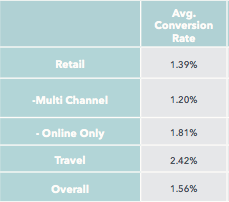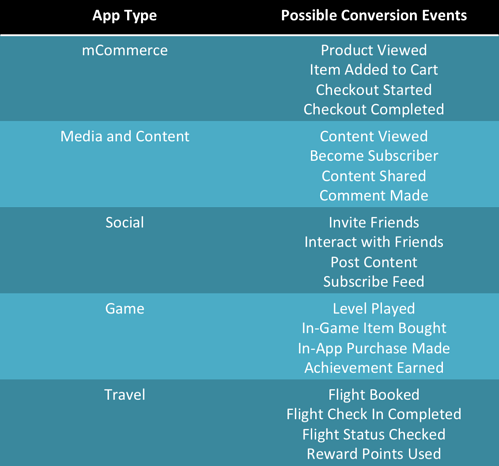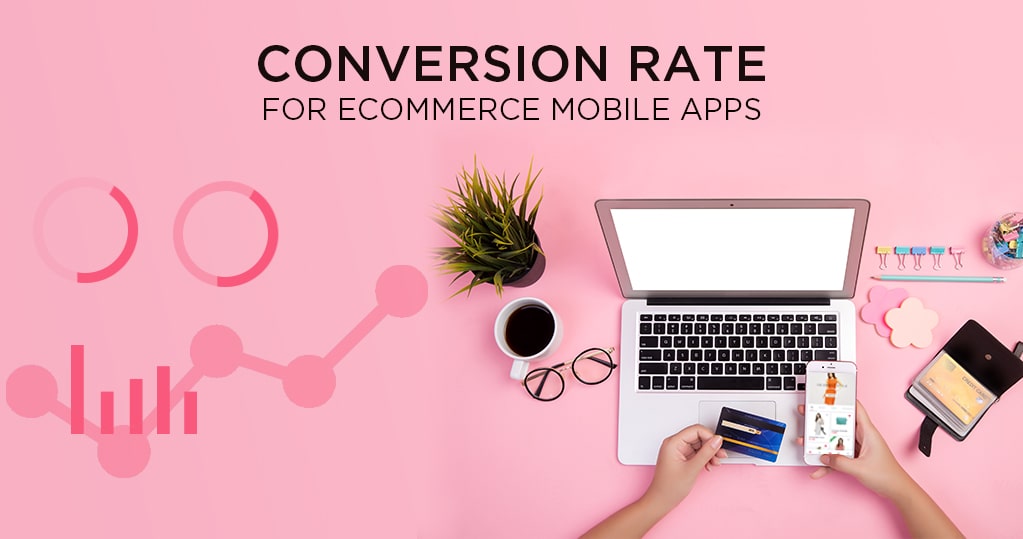Conversion rate is one of the brilliant marketing metrics that is estimated crosswise over most channels, and for mobile, it’s the same. Mobile application conversions go a long ways past downloads; truth be told, the genuine conversions occur in-application when an engaged client changes over on a predetermined goal. But as productive as mobile applications have become, advertisers feel they don’t have the bits of knowledge to upgrade their in-application experience to incite buys and other key conversions.
One of the most widely recognized of these experiences is the thing that your in-application conversion rate should be. What organizations need to know is how well are clients right now converting, by what method would that be able to be improved, and where do we remain over the business? To begin, we’ve outlined where in-application conversion rates are today and what that implies for your brand.
Looking at mCommerce Conversion Rates
As indicated by Monetate’s quarterly ecommerce study from Q4 2017, 2.03% of smartphone clients convert, 4.19% of tablet clients convert, and 4.68% work area/customary clients convert. There is as yet a change hole between Mobile versus customary that should be shut as clients keep on utilizing their gadgets to peruse rather than buy.

Image Source: Monetate
Moreover, Forrester’s 2017 study on internet retailing discovered conversion rates for mobile browsers (2.3%), mobile applications (6%), tablets (3.3%) and desktops (4.2%).
It stays extreme to gauge mobile application conversions because of the wide assortment of “conversion occasions” i.e., a solitary mobile application can characterize various occasions notwithstanding a basic checkout.
Notwithstanding, mobile applications are the victors with regards to change: contrasted with mobile browser traffic, applications convert 160% more clients. Contrasted with desktop traffic, applications convert 43% more clients.
Application conversion rates will keep on being a concentration as advertisers and application designers look to drive more income from their applications. There is still a great deal of work to be done in enhancing client experience for better commitment to drive more changes, however, the question still remains: what is a decent application Conversion rate?
What’s Good?
The general consensus across gatherings, independent research, and brand-if analysis are that most applications have a 1-2% normal conversion, so hitting anything above 2% ought to be viewed as a solid conversion rate. Games, due to their addictive quality and high time in the application, can consider normal to be as high as 10%, though SaaS applications here and there battle to hit 1% on in-application objectives, in spite of being moderately notable. Conversion for the online travel industry is 1-5%, and really has higher mobile conversion rates than desktop conversion rates.

Image Source: Wolfgang Digital, 2017
Be that as it may, as a general rule there is no brilliant standard – and that is alright, because there are progressively significant takeaways to improving application promoting.
This discrepancy is anything but an immediate aftereffect of the absence of research, yet rather, mirrors reality that there are various kinds of applications filling a wide range of needs. It’s troublesome, and once in awhile impeding, to pinpoint the perfect change rate if it doesn’t precisely suit your end goals. The keys to boosting application conversion rates are 1) defining your application’s remarkable conversion objectives, and 2) making successful commitment techniques to expand those conversion rates.
Distinguishing Your Conversion Goals
Mcommerce isn’t the main business that estimates conversions. A conversion doesn’t need to be an in-application buy – it very well may be an article perused, game played, social collaboration or even an expansion in time spent in the ecommerce application. On the off chance that yours is a media application, you may be generally keen on changing over uninvolved clients to dynamic supporters. On the off chance that you have a dynamic application and are running a push informing effort provoking clients to check-in for a flight, your change objective may have nothing to do with obtaining.

Since specific activities are finished more promptly than others, knowing your change “ask” is fundamental to distinguishing your optimal conversion rate. At that point, enhancements can be made steadily when you:
- Identify your rundown of the main 5 most basic activities/conversion rates
- ID your most reduced change rate, and focus on that as the pattern for development
- Come up with a couple of strategies to make improve the conversion procedure, possibly enrolling others in your association for thoughts.
Characterize conversion in the manner bodes well for your online selling apps adaptation procedure. Furthermore, recollect, change rates can generally increment, and the work is rarely done. Improving them you ought to consistently be taking a shot at!
Driving Engagement and Loyalty
We’ve discovered that applications that send in-application messages have increasingly steadfast and drawn in clients. In particular, applications that send in-application messages show around 27% more application dispatches and 2X higher client maintenance than applications that don’t.
Connected with clients convert at higher rates and give you progressively by and large lifetime esteem. This implies your conversion rates are exceptionally reliant on improving the in-application experience for clients. As it were, if you aren’t making it simple for individuals to do your ideal activities, they won’t do them!
Utilizing your examination to give commitment and conversion information and keeping tabs on your progress against unmistakably characterized conversion objectives informs nearly everything in your application improvement cycle:
- Redesigns
- UX changes
- Marketing campaign content
In short: picking relevant and significant conversion rates and attempting to support them builds your general ROI and helps make your application a gainful direct in your image’s general advertising technique – or its own right.
4 Proven approaches to Boost Your Mobile Conversion Rate
Gather Emails Without Disturbing Your Visitors
Mobile or not, some of the time it takes more than one session to convert guests into clients.
Rather than persistently trusting that your guests will return, you can take a stab at changing over them into email supporters first. Furthermore, you can without much of a stretch do that on mobile, as well.
Collecting leads on mobile is a dubious business, however.
There’s now restricted space for the guest to investigate on smartphones and you can’t stand to occupy all that free room with your lead structures. Furthermore, Google began punishing mobile sites with meddlesome interstitials (a.k.a. popups) starting in 2017. Along these lines, you must be much progressively cautious and less meddling when gathering messages on your mobile site.
Make On-Page Product Recommendations
Offering product recommendations on your ecommerce website is an incredible method to enable your guests to have a progressively charming shopping experience…
But at the same time, it’s an incredible method to expand your clients’ normal order value.
On the desktop, you, for the most part, have enough space to promote your items. Or on the other hand, propose things dependent on your guests’ perusing history through treats (in case you’re gathering them.)
Be that as it may, on Mobile, you should be shrewd about how you utilize the space accessible. (Even though this doesn’t imply that you can’t customize your guests’ shopping experience.)
One approach to make on-page item proposals on mobile is to display recommended things without making the guest hop to another page.
This is a splendid strategy since it enables the guest to find more alternatives and conceivably spend more—without leaving the item page they’re initially keen on.
It acts both as a delicate strategically pitching device and a customized style direct that improves the guests’ shopping experience.
Guide Your Visitors on Mobile
It’s anything but difficult to expect online stores are less personal than physical shops since it’s difficult to chase after your guests on the web and enable them to discover what they’re searching for.
But what if I told you it’s possible? And even easier.
Better online guidance implies more sales, less returns, and more joyful clients.
What’s more, the best part is, it works superbly on mobile, as well.
How about we take the case of size guides.
Numerous online stores offer brisk size aides (typically as a picture) that power the client to leave the item page.
Be that as it may, for what reason do you need to guide the guest away from the item they’re keen on?
Keep them on the page and give however much data as could reasonably be expected.
Maximize the Use of Product Images
A decent mobile encounter is about pictures.
Mobile sites, applications, social networks, and games—they all depend intensely on visuals.
Furthermore, online stores are no exemption.
Visuals are a lot simpler to see than plain content.
What’s more, in case you’re selling on the web, you have to know the significance of optimizing product images for the best shopping experience. In fact, 67% of consumers say item pictures are very important in purchasing an item.
How you show your item pictures can be the way to improving your mobile change rate.
Numerous ecommerce sites lean toward utilizing sliders on mobile to make item pictures simple to peruse. In any case, is there any valid reason why you shouldn’t utilize the maximum capacity of swiping on mobile?
Along these lines, guests get the opportunity to see the item from various points. Furthermore, that implies simpler acquiring choices and higher conversion rates.
It’s All Part of the Bigger Picture
Mobile is only one channel, so consider it about your business strategy. Do your mobile clients peruse in-application before making buys in-store? What number of your clients are locked in enough that they would utilize a mobile coupon? Basically: how are your mobile clients acting inside and taking an interest as a piece of your general promoting and sales pipes? Realizing this will assist you with improving in-application conversion rates, yet additionally, help in making an increasingly significant application and a more grounded promoting channel for your brand.








